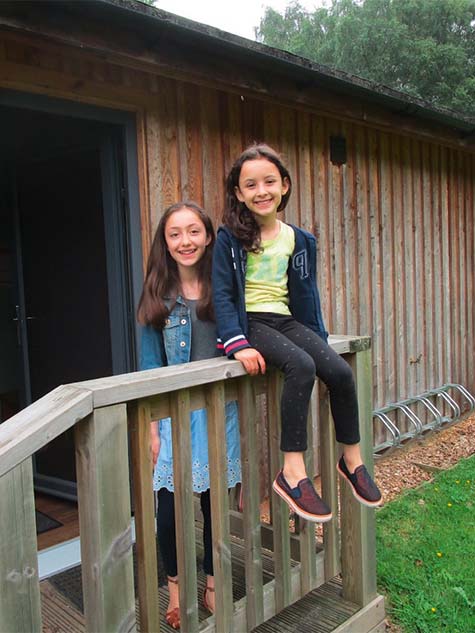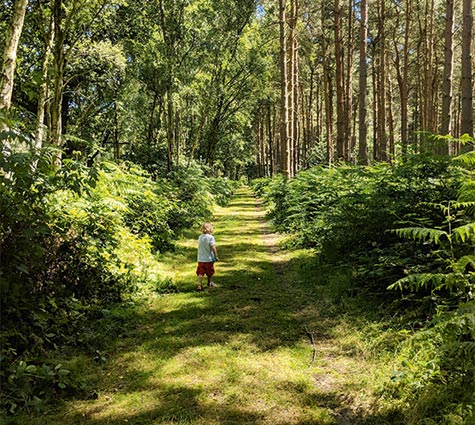Real or make-believe, Sherwood Forest is just the starting point when it comes to the legend of Robin Hood, finds David Atkinson
In Sherwood, all paths lead to the Major Oak. The 1,000-year-old hollow oak with a 30m base towers over the green shoots of the forest like an elder statesman on a sun-dappled morning. A crowd of appreciative onlookers are busily snaking a meandering trail from the new visitor centre to gaze upon the place where Britain’s best-loved folk outlaw and his band of merry men are alleged to have made their home. No wonder it was voted England’s Tree of the Year in 2014.
The latest version of the Robin Hood story hits cinema screens this winter (21 November). It’s a darker, more adventure-based take on the traditional folk tale, starring the Kingsman‘s Taron Egerton in the lead role and produced by Leonardo DiCaprio. The film comes off the back of the opening of the new Sherwood Forest Visitor Centre, a £5m facility in partnership with the RSPB. The centre, a timber building with a leaf-shaped roof and an adjoining amphitheatre, had its official opening in late August for the annual Robin Hood Festival, with its focus on recreating medieval games.


I had come to Sherwood with my daughters, Maya and Olivia, aged 12 and eight respectively, for a sneak preview of the new centre and a chance to soak up the magic of the forest of ancient and veteran oaks. The Major Oak was our starting point to follow the Robin Hood Trail across the East Midlands and south Yorkshire, retracing the footsteps of a character who has evolved from medieval folk tale to action hero. It’s also where we met the RSPB Area Reserves Manager Michael Copleston, the man who has overseen the building of the new visitor centre.
‘These woods have seen it all – from medieval life under forest law to modern-day tourism with some 350,000 visitors per year,’ said Michael, as we traced a route through the 450-acre forest, following flower-strewn woodland paths and passing heathlands alive with birdlife. ‘We aimed to bring out the rich cultural heritage of the stories and celebrate the woodland environment with the opening of this new centre.
‘These ancient trees are like living sculptures,’ he added. ‘Sherwood is one of the most important oak woodlands in the UK, supporting 1,000 species of insects, including rare species and rare fungi, and tawny owls.’
Sherwood was the largest of 90 royal forests created by William the Conqueror and once covered most of Nottinghamshire north of the River Trent. From the 12th to 14th century, when the Sheriff of Nottingham enforced a strict forest law to protect the king’s livestock, Sherwood became home to numerous fugitives. They hunted for animals and robbed passing travellers along the erstwhile Great North Road, now the present-day A1 from Newark to Doncaster.
The first written references to Robin Hood date back to six medieval tales recorded at the end of the 15th century, although minstrels were singing tales of Robin for several centuries beforehand. One of the original medieval tales, The Gest of Robin Hood, is the basis for the legend as we know it today. The fable tells of Robin’s rivalry with the Sheriff, the legend of splitting a silver arrow with his mastery of the longbow and the eventual pardoning by King Edward. It even includes references to his merry men, including Will Scarlet and Little John, but Friar Tuck and Maid Marian are absent, likely to be latter-day additions.


‘My theory is that Robin Hood was a real outlaw, not just a fictional character,’ said John Charlesworth, an expert in local history we met in visitor hub Edwinstowe. ‘He was probably a highwayman, but his infamy has evolved.
‘What I like most about Robin is the way that the legend can be adapted to reflect the social issues of the times without damaging the core of the story,’ he added.
Driving through the rural heart of Robin Hood country, our journey led us northwest to Rufford Abbey, an English Heritage property. The imposing country mansion is surrounded by verdant woodland and we found the candlelit remains of the 12th-century Cistercian monastery, later transformed into a country estate for wealthy local families, in the grounds. The ancient manuscripts and medieval tapestries provided an atmospheric backdrop. Legend suggests that, while Robin famously robbed the rich and gave to the poor, he had an uneasy relationship with the Church of England.
From here we headed to Clumber Park, a sprawling National Trust property and formerly a major deer-hunting park. Robin would have hunted for food here, defying the forest law. But instead of wild beasts, we found an oasis of tranquility, with a walk around the huge lake, a stroll along the sweeping avenue of lime trees and a moment’s contemplation in the tiny Gothic chapel.


Bronze statue of famous Robin Hood in front of castle in Nottingham.
Finally, Cresswell Crags is home to the only Ice Age cave art found in the UK and also the caves where Robin is alleged to have hidden while fleeing the Sheriff of Nottingham. Under forest law, outlaws could be taken dead or alive and Robin would have hidden in the dark, dank chambers of the caves to escape both the Sheriff’s men and locals seeking to betray him for a bag of silver.
We joined the group cave tour, complete with headlamps and hard hats, to explore the caves, learning about the geology of the area from the Ice Age and artefacts found from the era of early man. The girls particularly enjoyed the moment when we all turned off our headlamps to plunge the cave into an eerie darkness, as if we too were fugitives hiding from our pursuers among the stalagmites.
Back at the village of Edwinstowe, located on the fringe of the forest near the new visitor centre, we end our journey with a stroll around the churchyard of St Mary’s where, according to the legend’s happy ending, Robin and Maid Marian were finally married. The village is a haven for Robin Hood fans today, with its pubs, restaurants and guesthouses all trading on its close association with the legend.
‘Robin Hood means different things to different people. That’s why he remains part of our mythology,’ said Michael Copleston, smiling. ‘The beauty of Sherwood is, for me, that the woodland is an egalitarian story. That’s exactly what Robin Hood stood for.

Getting there
You will need a car and a reliable satnav to blaze a trail in Robin Hood’s footsteps. While the star attractions are included on brown signs, some of the smaller ones can be hard to find and the country roads tough to navigate.
Where to stay
The village of Edwinstowe, in the heart of the forest, is a good base. The Forest Lodge Hotel, a family-run restaurant with rooms, has family rooms from £120 B&B, based on three people sharing.
The Clumber Park Hotel, on the edge of Sherwood Forest, has a restaurant, pool with spa and family breaks from £160, based on two adults and one child on a dinner, B&B basis.
Where to eat
There are plenty of pubs and cafés in the villages along the trail, with Edwinstowe the hub of activity. Try The Bistro Edwinstowe for dinners, Sunday roasts and a kid’s menu.
The Crags Edge Café at Creswell Crags is a handy spot to refuel for lunch.
What to do
Creswell Crags combines a visitor centre, limestone gorge and country park.
Clumber Park, a historic country park located near Worksop.
Rufford Abbey is a former abbey converted into a country estate after the Dissolution of the Monasteries.
The Robin Hood Town Tour of Nottingham, led by Lincoln-green history boffin Ezekial Bone, traces the development of the legend.
Hoodwinked, a free trail of Wild in Art sculptures based on the Robin Hood tale, runs across Nottingham until 30 September.
For more info; go to visitsherwood.co.uk and visit-nottinghamshire.co.uk